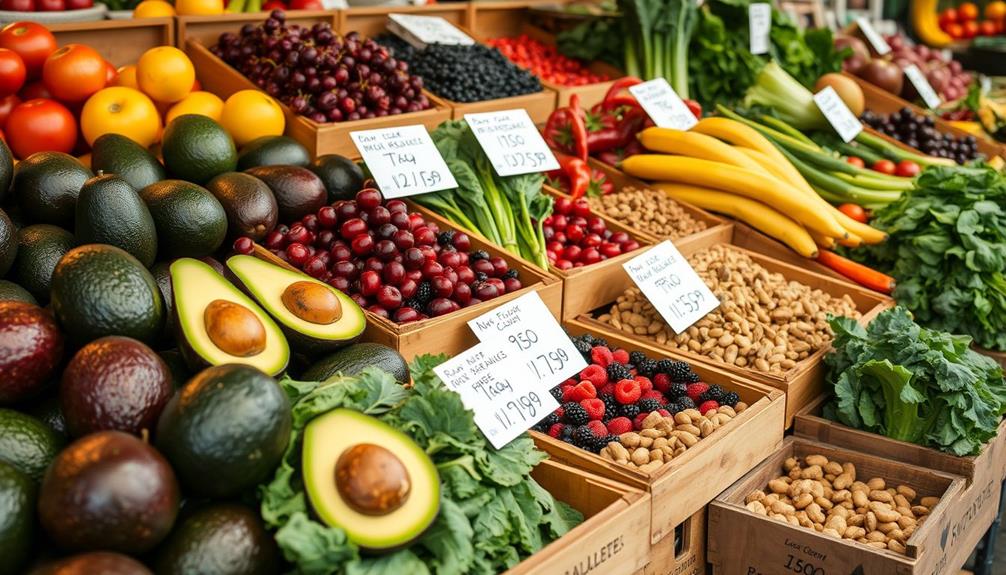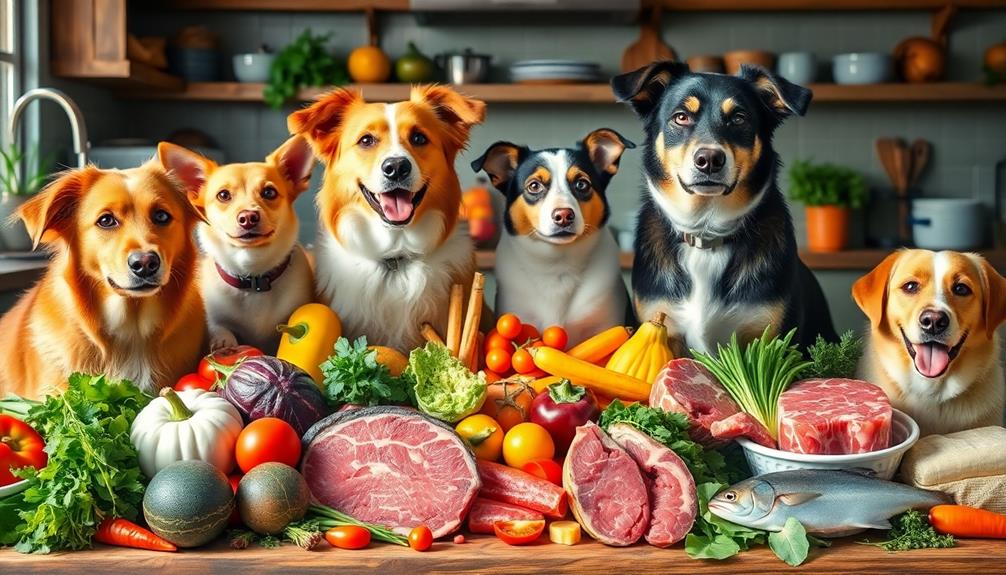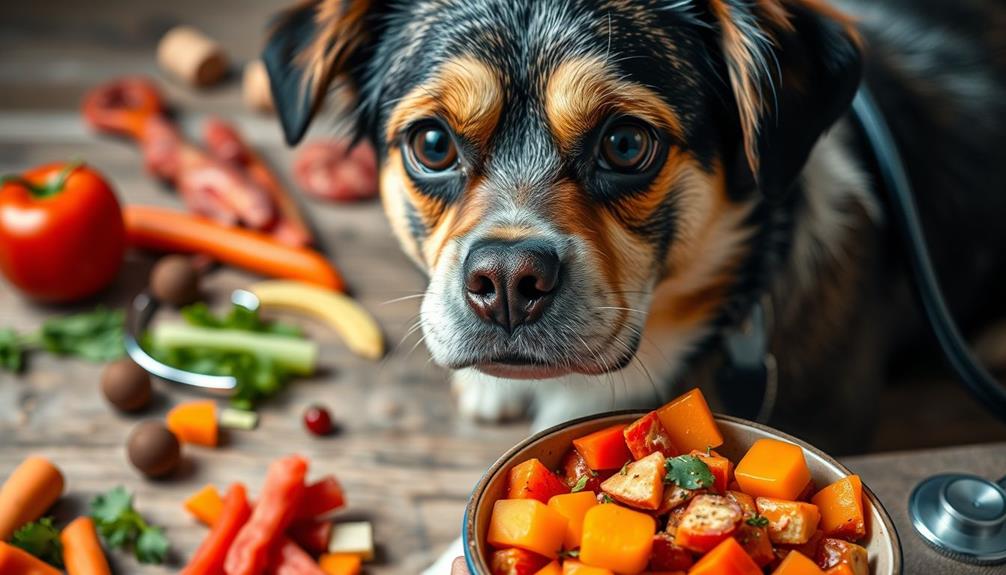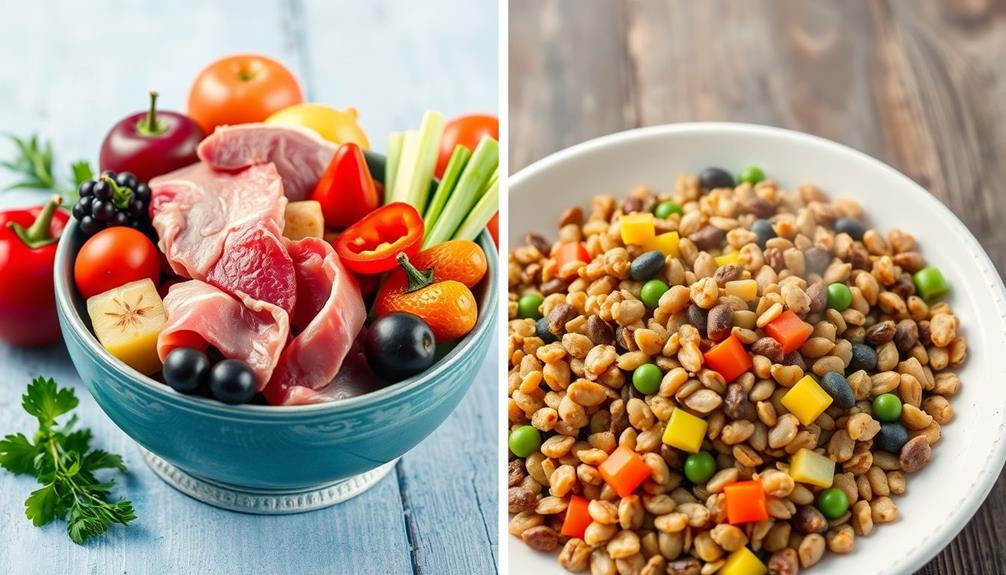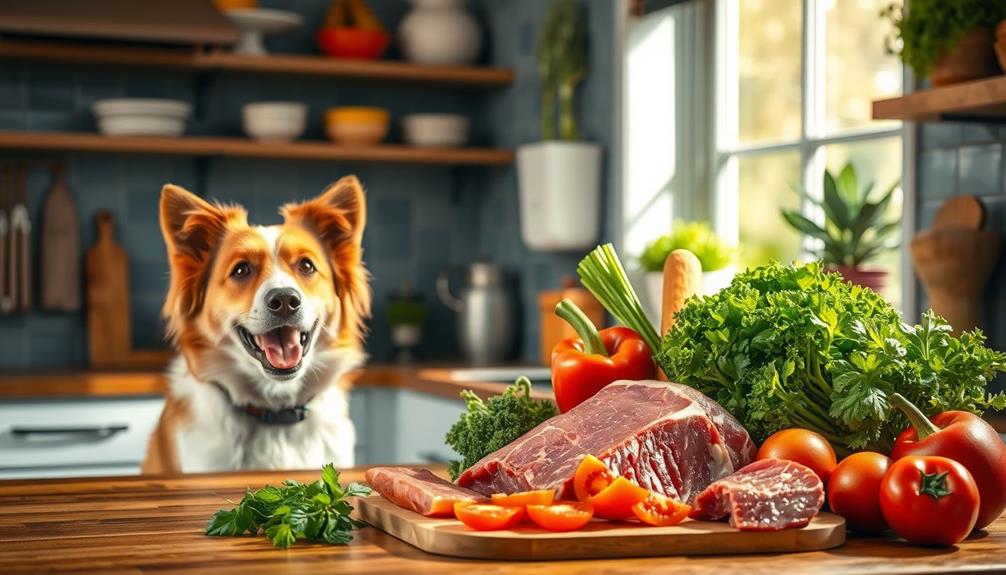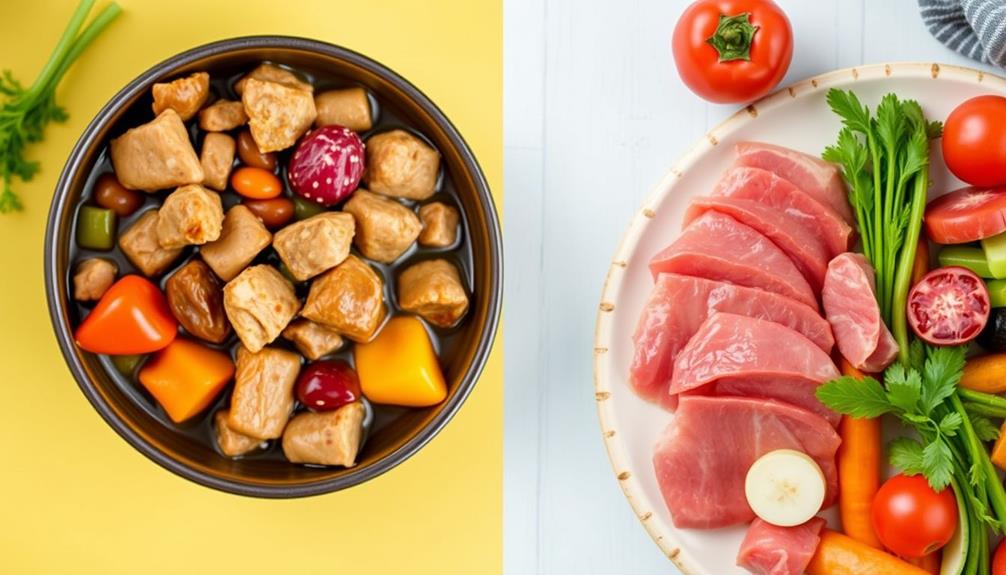A raw food diet can cost you between $25 and $450 per week, mainly depending on your choices. On average, you'll spend around $60 to $100, especially if you opt for organic produce. Seasonal buying can help lower expenses, as fresh, local foods are more affordable in summer. If you're on a tight budget, consider non-organic options or buying in bulk to save. Many find they actually spend less on a raw food diet than their previous diets. Curious about tips to manage costs and maximize benefits? You might find some helpful insights just ahead!
Key Takeaways
- Weekly costs for a raw food diet typically range from $60 to $100 for a single person, but can vary widely.
- Choosing non-organic produce can significantly lower expenses while still maintaining a plant-based diet.
- Organic ingredients can increase weekly spending, often leading to costs above $100.
- Seasonal fluctuations in produce availability can reduce costs, making summer the most affordable time for raw foods.
- Long-term health benefits from a raw food diet may offset initial higher costs, potentially saving on healthcare expenses.
Overview of Raw Food Diet Costs
When it comes to the raw food diet, you might find that weekly costs can vary widely, typically ranging from $25 to $450. For a single person, the average weekly spending usually falls between $60 and $100.
This variance often stems from the choice of organic produce, which can considerably raise your overall health expenses as it tends to be more costly than non-organic options. Additionally, incorporating nutrient-rich foods such as celery juice can enhance your diet and impact costs depending on availability.
Moreover, if you're investing in essential kitchen appliances like high-end blenders and food processors, expect to see costs soar even higher initially. These appliances can set you back anywhere from $300 to $700, impacting your budget.
Seasonal fluctuations also play a role in pricing; during summer months, you'll likely benefit from lower costs due to the abundance of fresh, local produce.
Interestingly, many individuals report that they spend less on a raw food diet compared to their previous vegan diets. By prioritizing fresh fruits and vegetables, you can still obtain essential nutrients while potentially saving money in the long run.
Weekly Spending Patterns
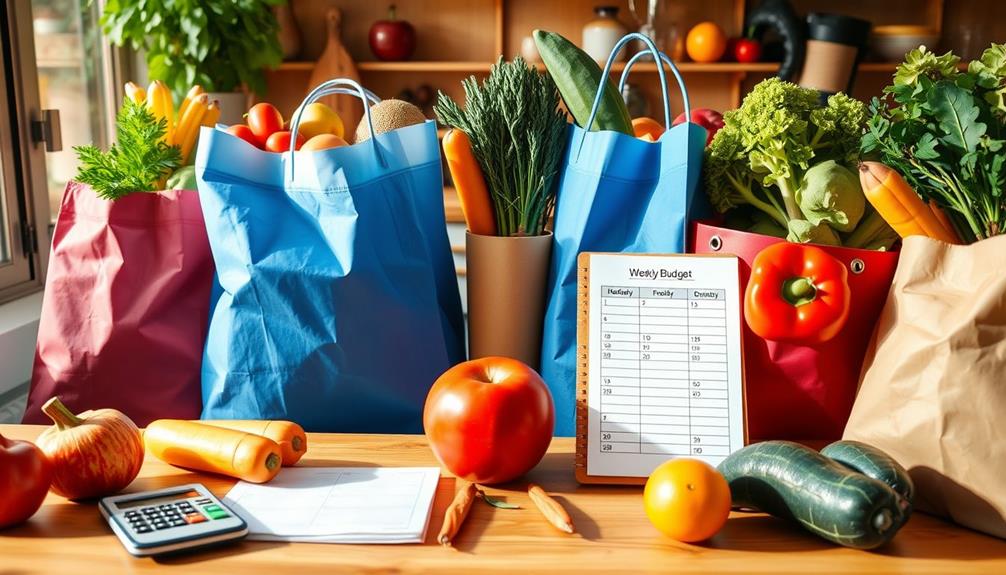
When you start a raw food diet, your weekly spending can vary widely, anywhere from $25 to $450.
If you prefer organic produce, you might find your costs higher, but many people still spend less than they did on previous diets.
Understanding these spending patterns can help you budget effectively while enjoying the benefits of fresh, raw foods.
Additionally, exploring various brewing methods can enhance your experience with beverages that complement your diet.
Weekly Spending Range
Maneuvering the weekly spending range for a raw food diet can be surprisingly variable, with costs spanning from $25 to $450 depending on your personal choices and circumstances.
On average, you might find yourself spending between $60 and $100 per week on raw food ingredients. If you opt for organic produce, keep in mind that it tends to drive up your costs. However, choosing non-organic options can help you save money without sacrificing your plant-based diet.
Additionally, understanding your budget can help you make informed decisions about your weekly spending.
Here are some emotional factors to evaluate when budgeting for your raw food journey:
- Health Benefits: Investing in fresh ingredients can lead to improved health and wellbeing.
- Sustainability: Supporting local farms through organic purchases can contribute to environmental preservation.
- Joy of Cooking: Exploring new recipes and flavors can make your meals exciting and fulfilling.
Seasonal fluctuations also play a role; summer often brings lower prices due to a bounty of fresh produce.
Interestingly, many individuals shifting from a vegan diet to a raw food diet report lower weekly spending, which can ease any financial concerns you may have.
Organic Vs. Non-Organic
Choosing between organic and non-organic produce can greatly impact your weekly spending patterns on a raw food diet. Generally, organic produce costs more than non-organic options, which can alter your weekly spending from around $60 to $100 or even higher. If you're on a tight budget, opting for non-organic items can help you save money while still enjoying a variety of fresh produce.
Additionally, it's important to take into account nutritional benefits and long-term health impacts, as well as the importance of planning when managing costs in financial considerations for elderly care.
However, bear in mind that seasonal fluctuations can make organic items more affordable during peak harvest times, allowing you to enjoy the benefits of organic eating without breaking the bank. Many individuals adapting to a raw food diet find they spend less overall than on previous vegan diets, especially when they focus on non-organic produce.
To manage costs effectively, keeping track of your grocery receipts and employing bulk buying strategies can be a game changer. When you purchase larger quantities of organic ingredients, you can often access significant savings, balancing your desire for organic food with your budget.
Ultimately, your choices between organic and non-organic will play an essential role in shaping your weekly spending patterns and overall experience on a raw food diet.
Budgeting Strategies
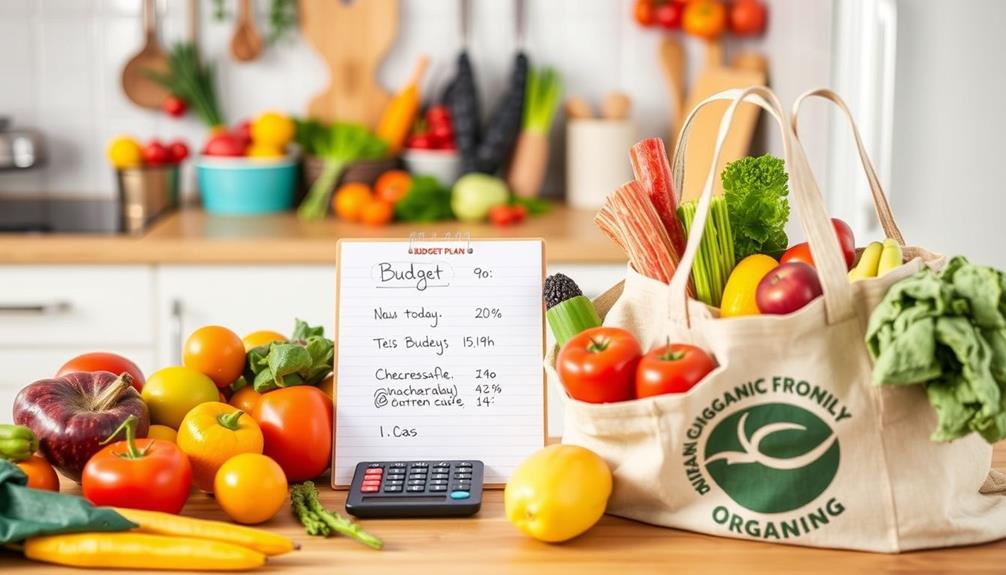
While budgeting for a raw food diet may seem intimidating, several strategies can help you manage costs effectively. By implementing these budgeting strategies, you can save money while enjoying fresh, nutritious foods. Additionally, considering the benefits of a balanced diet can enhance your overall health and well-being, making it worthwhile to explore options like cold medications overview that support your dietary choices.
- Bulk Buying: Purchase larger quantities of seasonal produce to get better deals and reduce overall costs.
- Community Gardens: Join a local community garden to access fresh fruits and vegetables at little to no cost.
- Monitoring Spending: Keep track of your grocery receipts to identify spending patterns and make adjustments as needed.
These approaches not only enhance your raw food experience but also make it more affordable.
Remember, weekly budgets can vary, typically around $100 for a single adult. However, by utilizing bulk buying and tapping into community gardens, you can greatly lower your expenses.
Collaborating with neighbors for fruit picking or sharing surplus from personal gardens can further enhance your savings and reduce waste.
Health and Financial Benefits
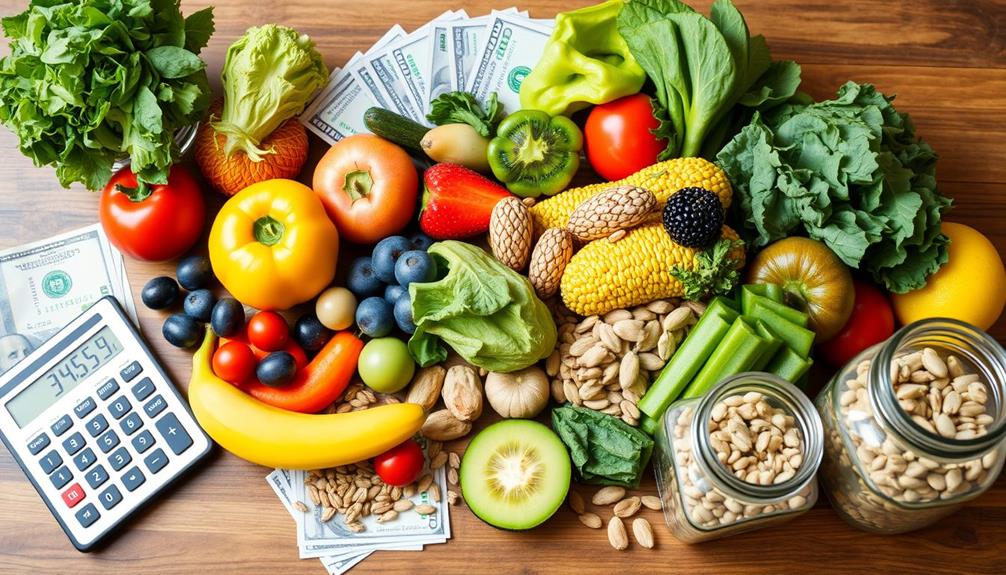
A raw food diet offers considerable health and financial benefits that can enhance your quality of life.
Shifting to this diet can lead to remarkable financial savings, with reports showing that you could save up to $500 monthly on healthcare costs. By focusing on whole foods rich in nutrients, you promote improved well-being, which may also reduce your need for medications over time.
Additionally, the high vitamin and antioxidant levels in raw foods can boost immune system function, further enhancing your overall health.
Avoiding processed foods and embracing high-quality superfoods boosts your energy levels and overall health, decreasing the frequency of illness. This means fewer sick days, contributing to additional financial savings from lost wages.
While the initial expense of raw foods might seem higher, the long-term benefits can offset these costs considerably.
Community Insights
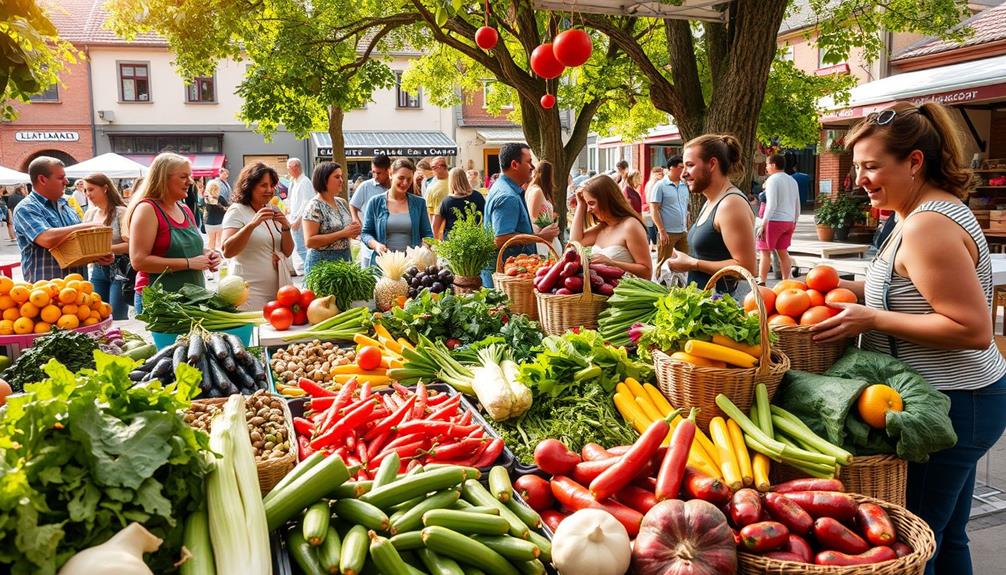
In the Rawtarian Community, you'll find a wealth of shared resources and recipes that can make your raw food journey easier and more affordable.
Community gardening initiatives, such as unique and wicked planters, and support networks not only help you save money but also connect you with like-minded individuals.
Let's explore how these collaborations can enhance your experience while keeping costs down.
Sharing Resources and Recipes
Joining the Rawtarian Community opens up a wealth of resources for anyone interested in the raw food diet. With over 5,000 members, you'll discover a vibrant network dedicated to sharing recipes and experiences.
This community not only offers delicious ideas for meals but also fosters collaboration that can save you money on groceries. Members often discuss unique flavor profiles that can enhance your raw food creations, making your diet more exciting and varied.
Here are a few emotional benefits of engaging with this community:
- Inspiration: Find creative recipes that excite your taste buds and keep your meals fresh.
- Support: Connect with others who understand your dietary journey and share similar challenges.
- Savings: Learn strategies for bulk buying and home-growing that can cut your food costs.
Local Gardening Initiatives
Engaging with local gardening initiatives can be a game-changer for anyone following a raw food diet. By participating in community gardens, you can grow your own organic ingredients, greatly lowering your grocery bills while enjoying fresh produce.
Many of these gardens operate on a cooperative model, allowing you to share costs and labor with neighbors, making gardening more affordable and accessible. Additionally, developing skills in primitive weapons for modern survival can enhance your self-reliance and resourcefulness in food sourcing.
These initiatives often provide workshops and resources to help you learn effective gardening techniques, from planting to harvesting. You'll not only boost your food supply with delicious plant-based foods but also gain valuable skills along the way.
Plus, collaborating with neighbors for fruit picking or joining fruit-sharing networks can supplement your diet at no cost.
Community gardens also foster social connections, giving you a platform to exchange seeds, plants, and gardening tips. This sense of community adds richness to your gardening experience, creating friendships and networks that extend beyond the garden itself.
Community Support Networks
Often, community support networks play an essential role in enhancing your raw food diet experience. By connecting with others who share your passion, you'll find a supportive environment that fosters growth, creativity, and resource sharing. Engaging with like-minded individuals can greatly ease the challenges of adopting a raw food lifestyle.
Additionally, participating in community activities can promote collaboration and teamwork, similar to how role-play toy sets enhance creativity and social skills.
Here are some incredible benefits you can expect from participating in community networks:
- Access to diverse recipes and tips that can inspire you and keep your meals exciting.
- Opportunities for bulk buying, which can help you save money on fresh produce and essential ingredients.
- A network of friends who understand the ups and downs of a raw food diet, providing emotional support when needed.
The Rawtarian Community, with over 5,000 members, showcases the power of collective wisdom. Members actively share experiences and strategies for making the raw food diet more affordable.
Shopping Preferences
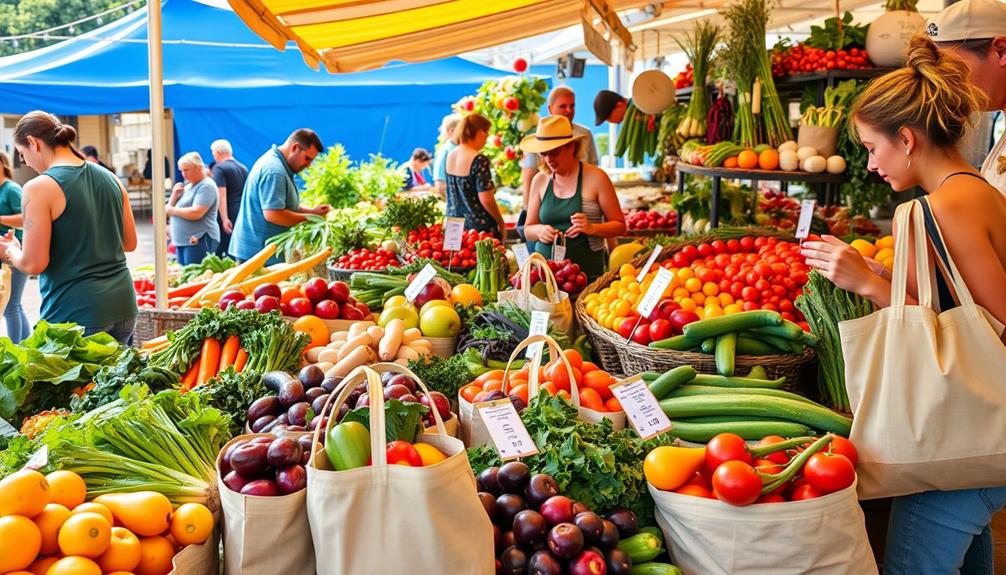
When it comes to shopping for a raw food diet, many people gravitate towards Whole Foods and local health stores for their extensive selection of organic products.
These places often carry a variety of fruits, vegetables, nuts, and seeds that fit your dietary needs. However, don't overlook farmers markets, where you can find fresher options and sometimes better prices compared to supermarkets.
Seasonal availability plays a huge role in your shopping choices. During peak harvest times, prices for certain fruits and veggies drop, making it a great time to stock up.
Keep an eye on what's in season to maximize both freshness and savings.
If you're budget-conscious, local shopping is usually more favorable than online ordering, which can incur high shipping costs.
Plus, local stores may have price discrepancies that lead to unexpected savings, especially if items are mispriced or discounted.
Cost Comparison With Other Diets
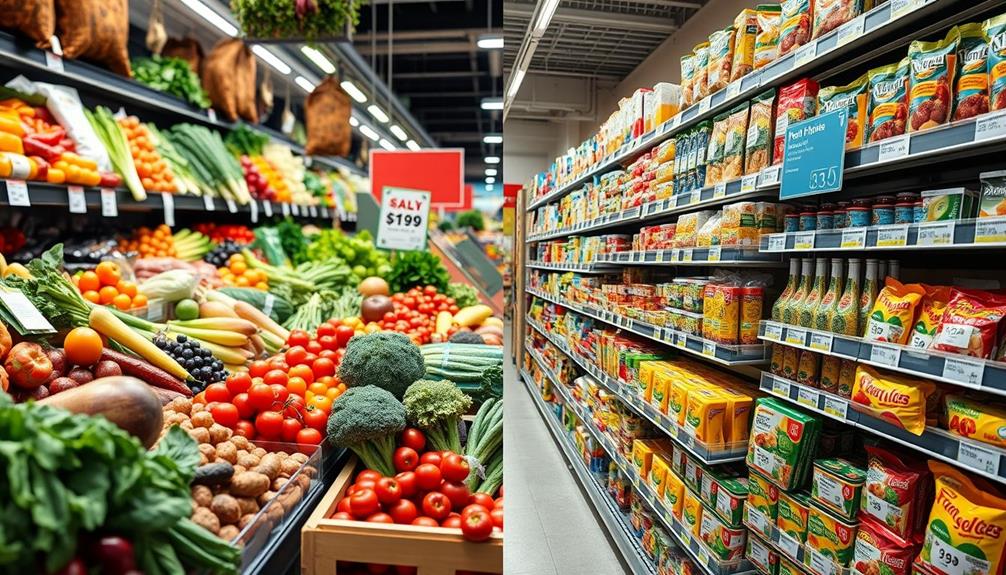
The cost of a raw food diet can be considerably higher than that of other diets, particularly a starch-based vegan diet, which relies heavily on affordable staples like rice and potatoes.
While shifting from a Standard American Diet (SAD), you might find your initial costs lower as you cut out processed foods. However, once you immerse yourself in the raw food lifestyle, prepare for weekly spending that typically ranges from $25 to $450, with most individuals averaging between $60 and $100.
Here are some emotional aspects to reflect upon:
- Organic ingredients can skyrocket your grocery bill, impacting your budget.
- The allure of fresh produce is tempting, but does it fit your financial goals?
- Long-term health improvements might mitigate costs, but can you afford the upfront investment?
While the raw food diet presents higher costs, contemplate the potential long-term savings on medical expenses.
Home Food Production Tips

Home food production can save you a considerable amount on groceries while enhancing your raw food diet. One of the best home food production tips is to start growing your own food. Even if you have limited space, small gardens or container gardening can yield fresh produce right at your doorstep.
Consider sprouting seeds indoors, which requires minimal investment and provides a nutritious boost to your meals.
Foraging for wild edible plants is another fantastic way to supplement your diet without spending a dime. You'll not only discover seasonal ingredients but also connect with nature.
If you have the space, planting fruit trees can offer long-term benefits, providing delicious fruit for years to come and reducing your need to buy fresh produce.
Additionally, collaborating with neighbors for fruit-picking opportunities or participating in local community gardens can enhance your food accessibility. You'll share resources and knowledge while enjoying the benefits of home food production.
Frequently Asked Questions
Is a Raw Food Diet Expensive?
A raw food diet can be expensive, especially with organic ingredients and necessary appliances. However, by buying in bulk or foraging, you can effectively manage costs, making it more affordable than you might think.
Is a Raw Food Diet Healthy for Humans?
A raw food diet can be healthy for you, offering more vitamins and minerals from fresh fruits and vegetables. However, you need to be mindful of potential nutrient deficiencies and balance it with other food options.
How Much Do You Eat on the Raw Food Diet?
On a raw food diet, you'll typically eat a variety of fruits, vegetables, and nuts, adjusting portion sizes based on your hunger. Many people find they consume fewer calories while feeling full and satisfied.
How to Do Raw Food Diet on a Budget?
Picture vibrant farmers markets brimming with fresh produce. To thrive on a raw food diet without breaking the bank, bulk buy, cultivate your own garden, forage for wild edibles, and connect with local farmers for better deals.
Conclusion
To sum up, a raw food diet can be both rewarding and budget-friendly with some planning. Notably, studies show that individuals on raw food diets spend about 28% less on groceries compared to those consuming processed foods. By prioritizing seasonal produce and bulk purchases, you can keep costs down while enjoying fresh, nutritious meals. Embracing this lifestyle not only benefits your health but can also lead to significant savings in the long run.

